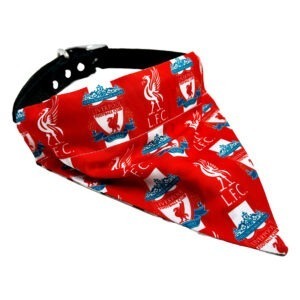The German Shorthaired Pointer (GSP) is an athletic and versatile breed, known for its high energy and intelligence. Originating from Germany, these dogs were bred for hunting, a task that required endurance, agility, and a sharp mind. Today, these traits translate into a pet that is eager, alert, and exceedingly fond of physical activities. It’s no wonder that they are often described as ‘powerhouses’ of energy.
A GSP’s unique characteristics go hand in hand with specific dietary and exercise needs. To fuel their energetic nature and maintain their strong, muscular build, these dogs require a diet rich in quality proteins and balanced carbohydrates. Their exercise needs go beyond a casual stroll in the park. A GSP thrives on rigorous physical activity and mental stimulation, which aligns with their inherent hunting instincts.
In essence, diet and exercise are the linchpins in a GSP’s overall health and longevity. Feeding them an optimal diet not only aids in maintaining their physique but also keeps various health issues at bay. Regular exercise, on the other hand, keeps them physically fit and mentally well-stimulated. A well-exercised GSP is a well-behaved GSP.
Some of our latest products...
-
犬用バンダナ
Liverpool FC Dog Bandana
$ 13.19 – $ 16.12 米ドル オプションを選択 この商品には複数のバリエーションがあります。 オプションは商品ページから選択できます -
犬用バンダナ
Manchester City Dog Bandana
$ 13.19 – $ 16.12 米ドル オプションを選択 この商品には複数のバリエーションがあります。 オプションは商品ページから選択できます -
犬用バンダナ
Manchester United Dog Bandana
$ 13.19 – $ 16.12 米ドル オプションを選択 この商品には複数のバリエーションがあります。 オプションは商品ページから選択できます -
As a GSP owner or prospective owner, understanding your pet’s specific dietary and exercise requirements is paramount. This knowledge is crucial to ensuring that they lead a healthy, happy, and fulfilled life. The sections that follow delve deeper into the diet and exercise needs of German Shorthaired Pointers, providing you with comprehensive insights and guidance on keeping your GSP at their absolute best. From understanding their unique nutritional requirements to exploring various diet options and exercise routines, we’ll equip you with the knowledge you need to care for your GSP in the best possible way.
Understanding the Dietary Needs of a German Shorthaired Pointer
Like any other dog breed, German Shorthaired Pointers (GSPs) require a well-balanced diet for their overall health. However, given their high-energy lifestyle, their nutritional needs are distinct and must be taken into account to ensure their well-being.
Protein is the most crucial component of a GSP’s diet. As active dogs, they need protein to build and repair muscles and tissues. A protein-rich diet also provides them with the necessary energy to sustain their daily activities. In general, the source of protein should be high-quality and can come from chicken, turkey, beef, fish, and other meat products.
Next, carbohydrates are essential, providing the much-needed energy for these energetic dogs. Still, it’s important to focus on complex carbohydrates like sweet potatoes, brown rice, and oatmeal. These are not only easier for the dog to digest but also keep them feeling fuller for longer, reducing the chances of overeating.
Fats, though often viewed negatively, are essential in a GSP’s diet. They provide energy, help in the absorption of certain vitamins, and contribute to skin and coat health. Look for sources of good fats like fish oil and flaxseed in your dog’s diet.
Regarding the dietary needs based on age, puppies need more frequent meals – typically four times a day, while adults do well with two meals. Senior GSPs, on the other hand, might require a diet lower in calories but higher in fiber, along with supplements to support joint health.
The impact of a GSP’s diet on their health cannot be overstated. A poor diet can lead to obesity, heart disease, and a host of other health issues. On the other hand, a nutritionally balanced diet can enhance their lifespan, keep their coats shiny, boost their immune system, and keep them in good spirits.
Lastly, it’s essential to note that some foods should be avoided as they can be harmful to GSPs. These include chocolate, caffeine, grapes, onions, and alcohol, among others. Always ensure to check the safety of a food item before introducing it into your GSP’s diet.
Exploring Diet Options for a German Shorthaired Pointer
Providing a balanced diet for your ジャーマン・ショートヘアード・ポインター (GSP) can take several forms, each with its pros and cons. Let’s delve into a few dietary options – commercial dog food, homemade diet, and a raw food diet.
Commercial dog food is the most convenient option for many pet owners. It’s readily available, and many brands offer specially formulated feeds to cater to the specific needs of different breeds, ages, or health conditions. For GSPs, high-quality commercial foods that prioritize protein and avoid unnecessary fillers or artificial additives are recommended. Despite its convenience, commercial food’s nutritional quality varies widely, and some brands might not provide the optimal nutrition that your GSP requires.
Another option is the homemade diet, where you prepare your GSP’s meals. This option gives you control over the ingredients used, enabling you to tailor the food to your dog’s specific needs. You can ensure the use of high-quality proteins, fruits, vegetables, and grains, ensuring a well-rounded meal. However, creating a balanced homemade diet requires research and understanding of a dog’s nutritional needs. Consult with your vet or a pet nutrition expert to ensure you’re not missing any essential nutrients.
A raw food diet, often known as Biologically Appropriate Raw Food (BARF) diet, involves feeding uncooked meats, vegetables, and bones. Supporters of the BARF diet believe it leads to shinier coats, healthier skin, higher energy levels, and smaller stools. However, critics cite risks like bacterial contamination and an unbalanced diet, which could harm your pet in the long run.
Transitioning to a new diet should be done gradually over a week or so. Abrupt changes can cause digestive issues. Start by mixing the new food with the old in increasing proportions daily until the old food is entirely replaced.
Each dietary option has its benefits and challenges. It’s up to the pet owner to decide which is the best fit for their GSP, considering their lifestyle, budget, and the dog’s health and preferences. Always consult with a veterinarian when making significant changes to your pet’s diet.
Exercise Needs of a German Shorthaired Pointer
German Shorthaired Pointers (GSPs) are a versatile and athletic breed, known for their boundless energy and playful nature. They require substantial physical activity to maintain optimal health and behavior. Without sufficient exercise, these dogs can become bored and potentially destructive.
A GSP typically needs at least one hour to two hours of vigorous exercise each day. This could include running, fetching, swimming, agility training, and hiking. These high-energy dogs make excellent companions for active individuals or families who enjoy outdoor pursuits. They are also superb competitors in dog sports, like field trials and agility, thanks to their speed, intelligence, and versatility.
Exercise needs can vary based on the GSP’s age and health condition. Puppies have a lot of energy but should not be over-exercised as their joints and bones are still developing. Short, frequent play sessions throughout the day are ideal. As the GSP grows into an adult, their exercise can be more strenuous and prolonged. Senior dogs may not be as active but still benefit from regular, gentle exercise.
But, exercise for a GSP goes beyond physical activity. Mental stimulation is equally important. Training sessions, puzzle toys, and games that require problem-solving all help to keep a GSP’s mind sharp. Hide-and-seek games or teaching them new commands or tricks can provide mental stimulation.
It’s essential to monitor your GSP during exercise, especially in hot weather. This breed can be prone to overheating. Always provide fresh water and shade and avoid the hottest parts of the day for exercise.
Remember, every dog is an individual. What works for one GSP may not necessarily work for another. Paying attention to your dog’s reactions during and after exercise can help tailor a routine that suits them best. Consistent vet check-ups can also provide a more personalized exercise plan for your GSP to ensure they’re getting the right amount and type of exercise for their health and happiness.
結論
The German Shorthaired Pointer (GSP) is a remarkable breed, celebrated for its intelligence, energy, and versatility. However, owning a GSP is a significant commitment that requires a specific understanding of the breed’s nutritional and physical needs. This understanding is crucial in ensuring your GSP lives a healthy, happy, and fulfilling life.
Nutrition plays an integral role in maintaining your GSP’s overall health and longevity. It is essential to understand the breed’s dietary requirements and how they change at different life stages. Providing a balanced diet, whether through high-quality commercial food or a carefully crafted homemade diet, is vital for the dog’s growth, energy, and general wellbeing. It’s also crucial to consider potential dietary concerns specific to the breed and discuss them with a vet.
Exercise is another key element for a GSP’s quality of life. This breed is full of energy and needs ample physical and mental stimulation to prevent boredom and promote physical fitness. Suitable exercises range from running and swimming to agility training and interactive games. The amount and intensity of exercise should be adjusted to match the dog’s age and health condition.
Remember that each German Shorthaired Pointer is unique, with their own individual quirks and preferences. Therefore, consulting with a veterinarian is always recommended for personalized advice on dietary needs and exercise routines for your GSP. Regular vet check-ups can help monitor the dog’s health, adjust their diet and exercise routine as necessary, and prevent potential health issues before they become serious.
In conclusion, proper diet and exercise are fundamental in ensuring your German Shorthaired Pointer thrives. As an owner, the time, effort, and commitment you put into understanding and catering to your GSP’s needs will reward you with a loyal, healthy, and joyful companion.
よくある質問
What is the ideal diet for my German Shorthaired Pointer?
The ideal diet for a German Shorthaired Pointer should be balanced and nutritious, containing a good mix of proteins, carbohydrates, fats, vitamins, and minerals. High-quality commercial dog food that caters to their specific life stage (puppy, adult, or senior) can be a good choice. However, some owners prefer homemade diets or raw diets, which should be balanced and vet-approved. It’s essential to avoid food items that are harmful to dogs, such as chocolate, grapes, onions, and excessive amounts of salt.
How much exercise does a German Shorthaired Pointer need?
German Shorthaired Pointers are highly energetic and require a significant amount of exercise to stay healthy and happy. On average, an adult GSP should get at least an hour to two hours of active exercise per day. This can include activities such as running, swimming, hiking, playing fetch, or participating in dog sports like agility or flyball.
Can I feed my German Shorthaired Pointer a vegetarian diet?
Dogs, including German Shorthaired Pointers, are omnivores but have a biological preference towards a diet rich in animal proteins. While it is technically possible to feed them a vegetarian diet, it should only be done under strict veterinary supervision to avoid nutritional deficiencies.
My German Shorthaired Pointer seems to have endless energy. Is it okay to exercise them more than two hours a day?
While German Shorthaired Pointers are known for their high energy levels, it’s important not to over-exercise them, which could lead to exhaustion or potential injuries. Providing mental stimulation through puzzle toys or obedience training can also help burn off some of their energy without putting too much physical strain on them.
Is a raw food diet good for my German Shorthaired Pointer?
Some owners prefer a raw food diet for their dogs, believing it’s more natural and healthier. However, raw diets can pose risks, including exposure to pathogens and potential nutritional imbalances. If you’re considering a raw diet for your German Shorthaired Pointer, it’s crucial to consult with a veterinarian or a pet nutrition expert to ensure the diet meets your dog’s nutritional needs.





